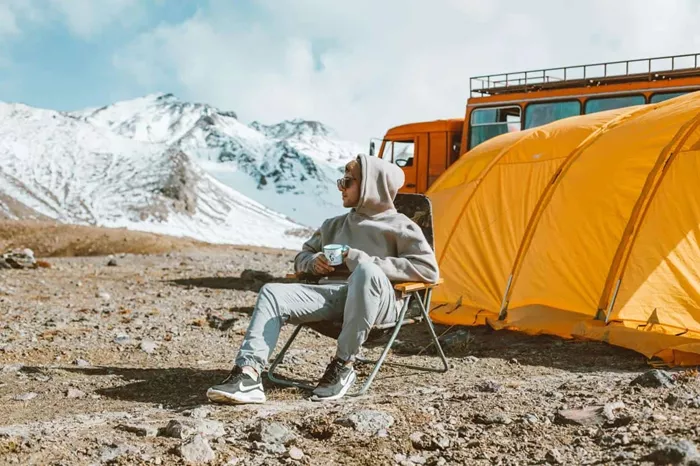Camping used to be known as an affordable way to vacation. But recently, many people are shocked by how expensive it has become. A simple weekend trip can now cost hundreds of dollars. Why is this happening? Let’s break down the reasons.
First, demand has increased dramatically. More people than ever want to experience nature. This pushes prices up for campsites, gear, and related services. Second, equipment quality standards have risen. Today’s campers expect lightweight, durable gear that performs well in all conditions. This technology isn’t cheap.
The True Cost of Quality Camping Gear
Tents: More Than Just Fabric and Poles
Modern tents are engineering marvels. They use special materials that are:
- Lightweight (for easy carrying)
- Waterproof (to keep you dry)
- Durable (to withstand wind and weather)
A good tent might cost 300−600. The cheapest options often fail when you need them most. Many campers learn this lesson the hard way during unexpected rainstorms.
Sleeping Bags: Your Nighttime Lifeline
Temperature ratings matter more than you think. A 50sleepingbagmightclaimit′sgoodfor30°F,butyou′lllikelyfreeze.Qualitybagswithaccurateratingsstartaround150. Down-filled bags (the warmest option) can exceed $500.
Backpacks: Your Mobile Storage Solution
A proper backpack distributes weight efficiently. Cheap packs cause back pain and fatigue. Expect to pay 200−400 for a backpack that won’t ruin your trip. Features like:
- Adjustable suspension systems
- Breathable back panels
- Customizable compartments
Campsite Fees: More Than Just a Patch of Dirt
Location Dictates Price
Popular national parks charge 25−50 per night for basic sites. Private campgrounds with amenities (pools, WiFi, laundry) can cost 60−100. Some “glamping” sites exceed $200 nightly.
Reservation Systems Add Fees
Many parks now use online booking platforms. These often add:
- Reservation fees (6−10 per booking)
- Service charges (percentage of total cost)
- Cancellation fees (if plans change)
Seasonal Price Surges
Summer weekends see the highest demand. Some campgrounds double prices during peak season. Off-season camping (spring/fall) offers significant savings if you can handle cooler weather.
Hidden Costs Many Campers Forget
Transportation Expenses
Reaching remote locations isn’t free. Factors include:
- Gas for long drives
- Vehicle wear and tear
- Possible rental car or RV costs
- National park entrance fees (20−35 per vehicle)
Food Preparation
Camp cooking requires special equipment:
- Portable stoves (50−300)
- Coolers (50−400)
- Utensils and cookware
Eating out nearby often costs more than regular restaurants too.
Safety and Emergency Gear
Don’t skimp on these essentials:
- First aid kits (30−100)
- GPS devices or satellite messengers (150−400)
- Bear spray in certain regions (30−50 per canister)
Why Investing in Quality Pays Off
Durability Saves Money Long-Term
A 400tentthatlasts10yearsischeaperthanreplacinga100 tent every season. Quality gear also performs better when you need it most.
Comfort Enhances the Experience
Being cold, wet, or uncomfortable ruins trips. Proper equipment makes the difference between loving camping and swearing it off forever.
Safety Shouldn’t Be Compromised
In remote areas, reliable gear can be lifesaving. A failing stove or leaking tent becomes dangerous in bad weather.
Tips for Camping on a Budget
Borrow Before You Buy
Try before investing. Many outdoor clubs rent gear. Some retailers offer demo programs.
Shop Off-Season Sales
Winter is the best time to buy summer gear. Retailers clear inventory when demand is low.
Consider Used Equipment
Quality gear often lasts longer than owners need it. Check:
- REI Used Gear
- Local outdoor consignment shops
- Facebook Marketplace (verify condition carefully)
Camp Close to Home
Save on travel costs. You might discover amazing spots within an hour’s drive.
Split Costs with Friends
Share large items like tents, stoves, and coolers. This works especially well for group trips.
The Future of Camping Costs
Prices will likely continue rising due to:
- Increased outdoor participation
- Higher material costs
- Climate change impacting popular areas
- More paid reservations replacing first-come sites
Conclusion
However, camping remains cheaper than many vacations. The key is viewing camping gear as a long-term investment. Quality equipment provides years of adventures. For those who camp frequently, the cost per use becomes quite reasonable.
Remember: What seems expensive upfront often prevents costly (and uncomfortable) problems later. Your future self, warm and dry in a storm, will thank you for not cutting corners.
Related topics:
Best Lightweight Camping Mats: A Comprehensive Guide
Best Lightweight Camping Stool: A Comprehensive Guide
Best Lightweight Camping Gear: a Comfort Guide

